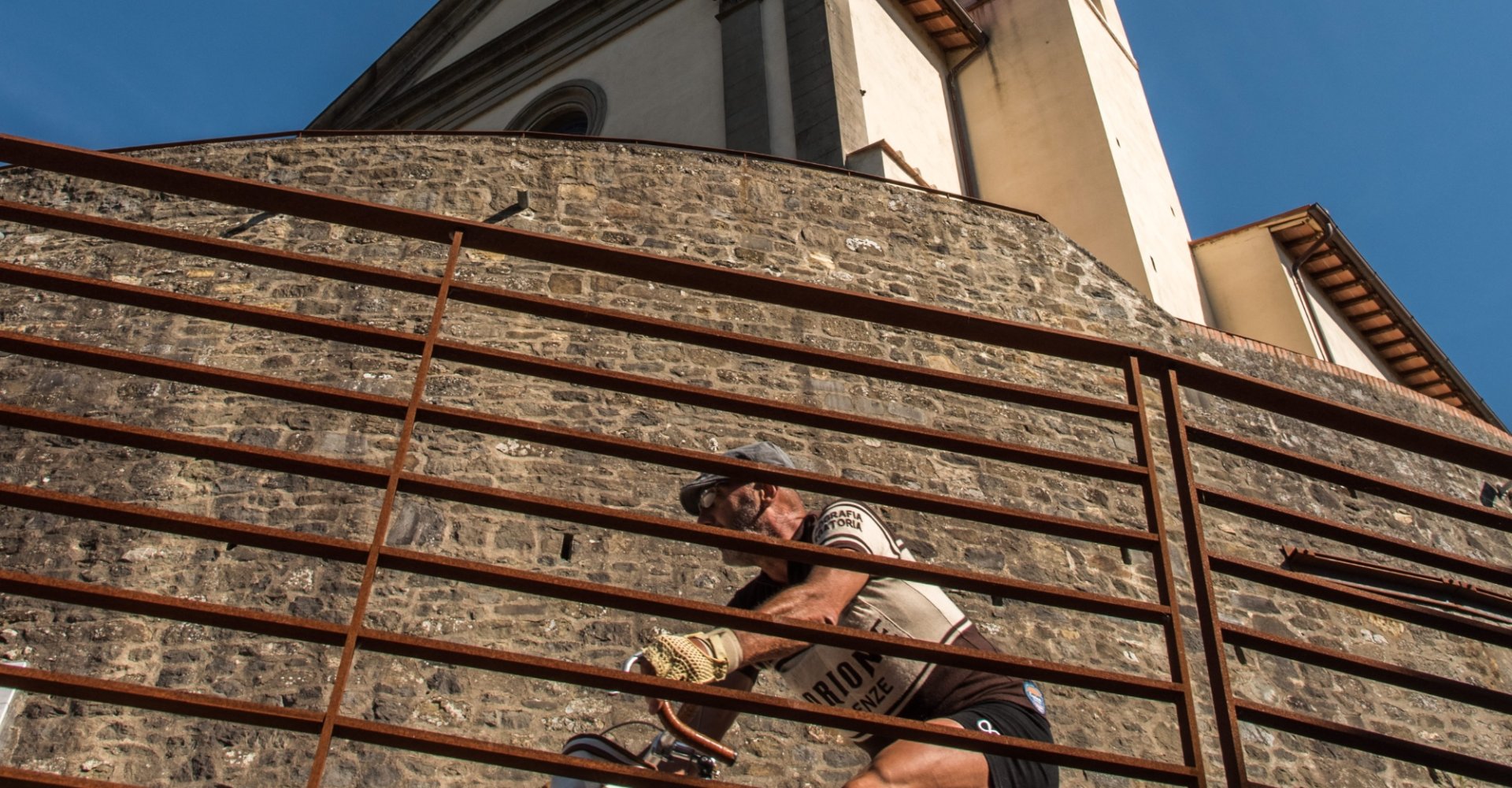Via dei Fossili

Did you know that in Montevarchi, in the heart of the the Valdarno, you can see from up close a whole mammoth skeleton? No, it is not a scene from the movie A night at the museum, it is the reality! To discover this and other curiosities regarding the territory, we recommend you ride along a loop-shaped cycling trail between the municipalities of Cavriglia and Montevarchi.
The circular trail passes through some of Valdarno's most characteristic villages and offers a perfect mix of nature, history and rural surroundings, with picturesque vineyards and olive groves.
Set out to enjoy typical Tuscan cuisine, to enter farms and savor the scent of wine, to admire a series of Art Nouveau and Déco buildings or the works of art and fossil finds housed in museums.
Cavriglia
The itinerary along the Via dei Fossili can begin in Cavriglia, a village extending into the upper Valdarno, the foothills of the Chianti Mountains, with a long history, as evidenced by a number of finds from Roman and Etruscan times. In addition to having been a "welcoming" place thanks to its ancient dispensaries, the Cavriglia area is also linked to the lignite mines, a fuel that has been mined in Castelnuovo dei Sabbioni since the 19th century and that has radically changed the shape of the subsoil. Today the history of this material and the hard work of the miners is told in a museum, the MINE - Museo delle Miniere del Territorio (Museum of the Mines of the Territory). For the more romantic, instead, the magnificent Fineschi Rose Garden, home to more than 7,000 varieties of extremely fragrant roses, some even centuries old, cannot be missed.
Montevarchi
Riding along the route we arrive in Montevarchi. Here the Paleontological Museum, in the old Franciscan convent of San Lodovico, is worth a visit. The exhibit contains about 2,600 artifacts, coming almost exclusively from the Valdarno, ranging in age from the Upper Pliocene to the Lower Pleistocene. The collection boasts rare specimens, such as the Elephas meridionalis, an imposing elephant that could exceed 4 meters by 200 quintals in weight; giant hyenas (Pachycrocuta brevirostris); and solitary predators similar to saber-toothed tigers (Homotherium crenatidens). In the archaeological section you can see numerous Etruscan-Roman artifacts from the Valdarno, but also Etruscan artifacts from the Viterbo area, Roman coins, and a splendid kelebe volterrana (a krater-shaped vase with a funerary purpose) from the 3rd-4th centuries B.C.
If you wish to end your visit with something more "recent," you can drop by the Cassero for the Italian sculpture from the 19th and 20th century: the museum is housed in the ancient Cassero di Montevarchi, dating back to the 14th century, and consists of more than two thousand five hundred works, including bronzes, marbles, plaster casts, terracottas and drawings, by Tuscan and Italian artists. The Cassero collection includes, among others, works of historical and artistic importance by Michelangelo Monti, Timo Bortolotti, Arturo Stagliano, Alberto Giacomasso, Mentore Maltoni, and Donatella (Dodi) Bortolotti.